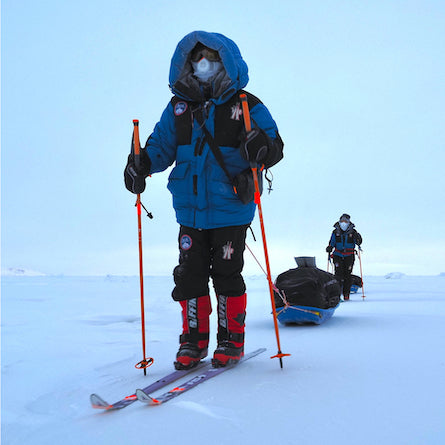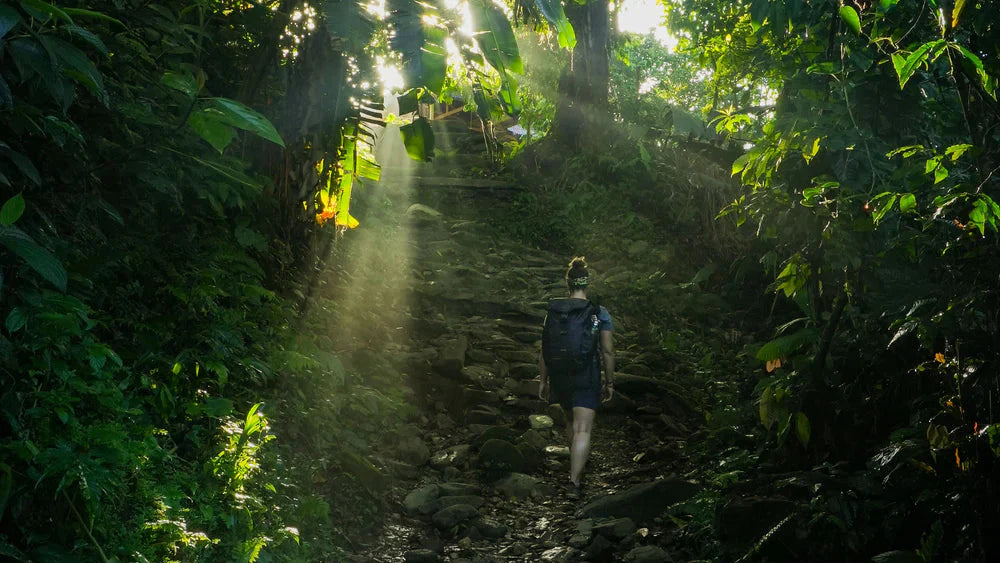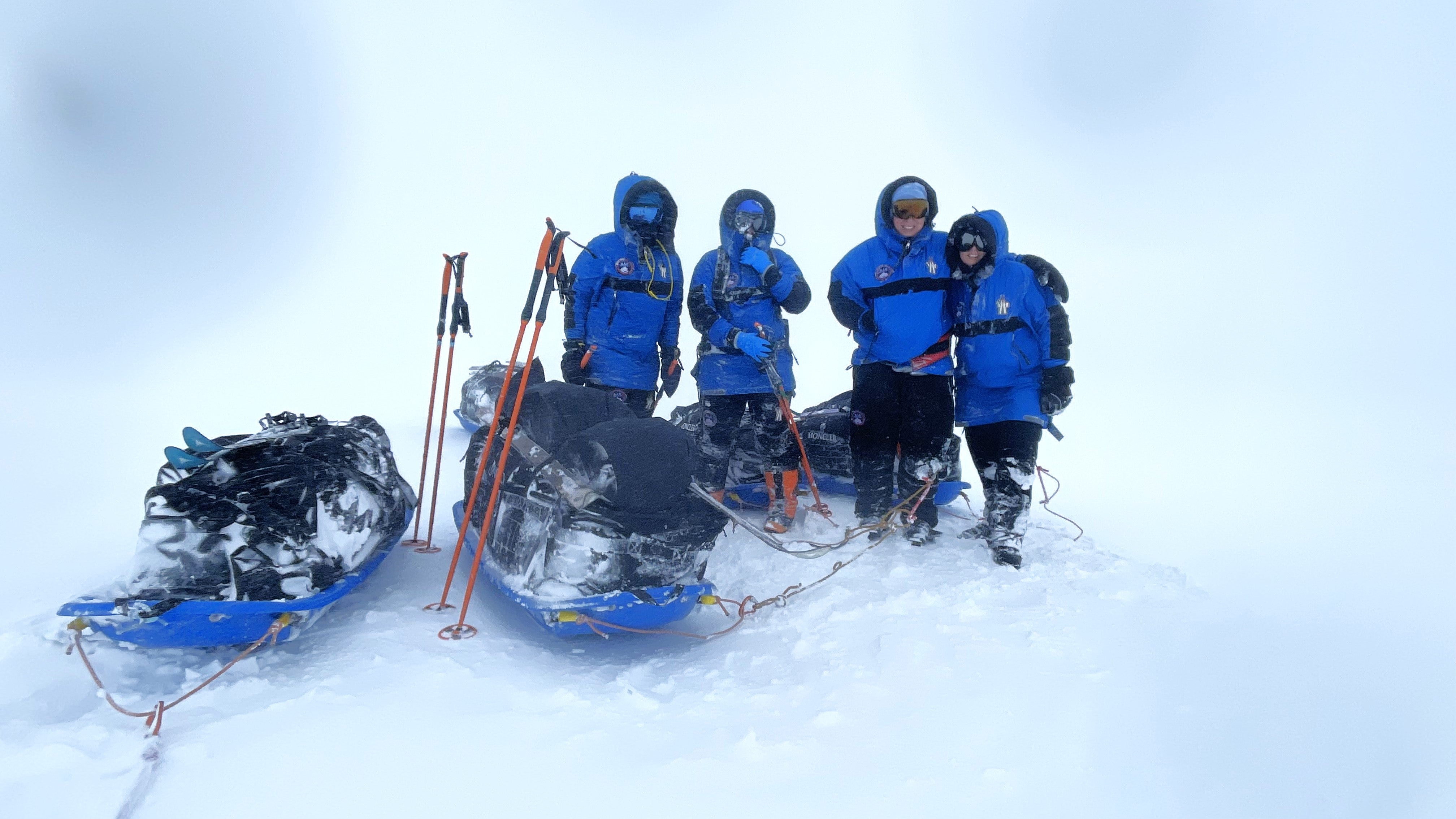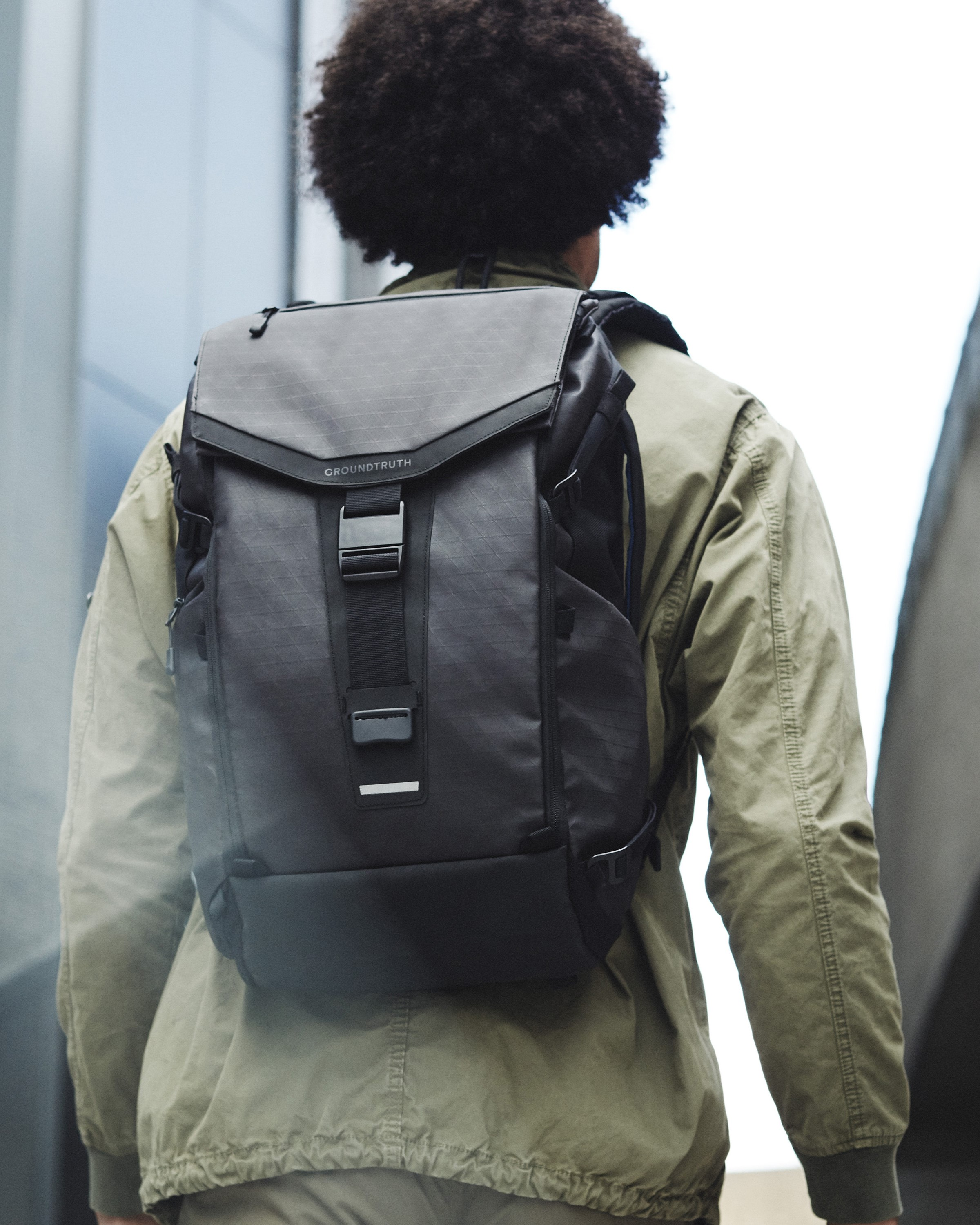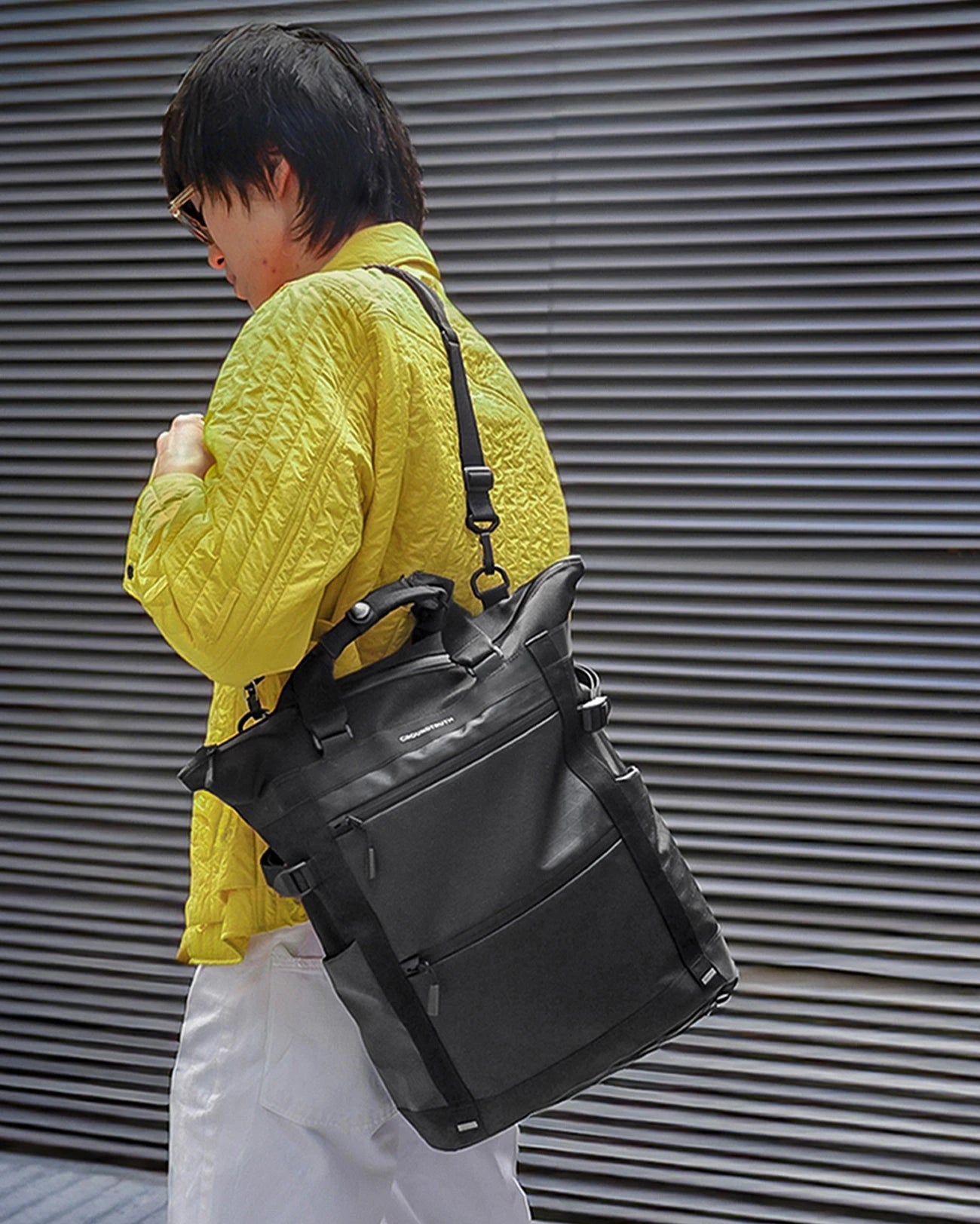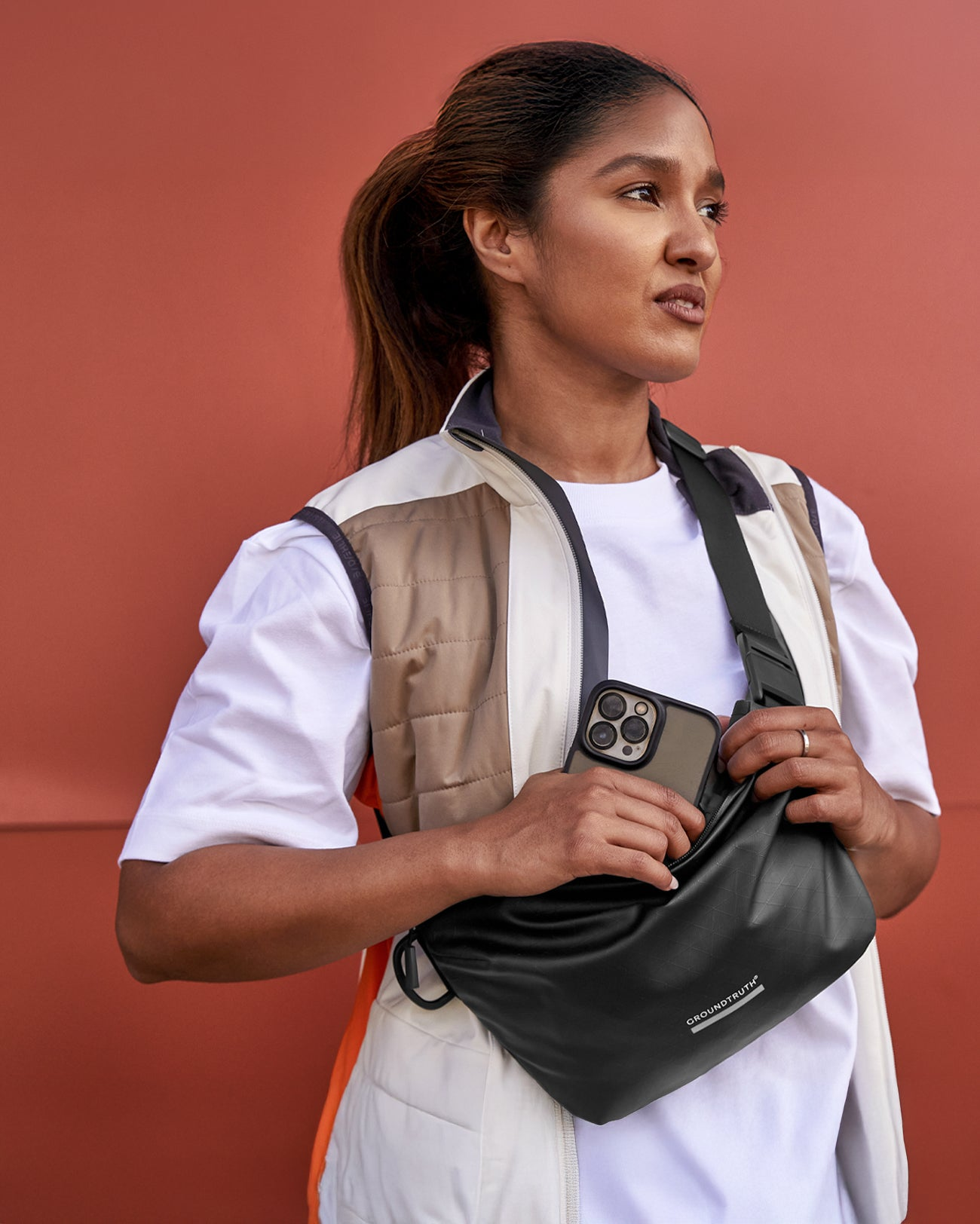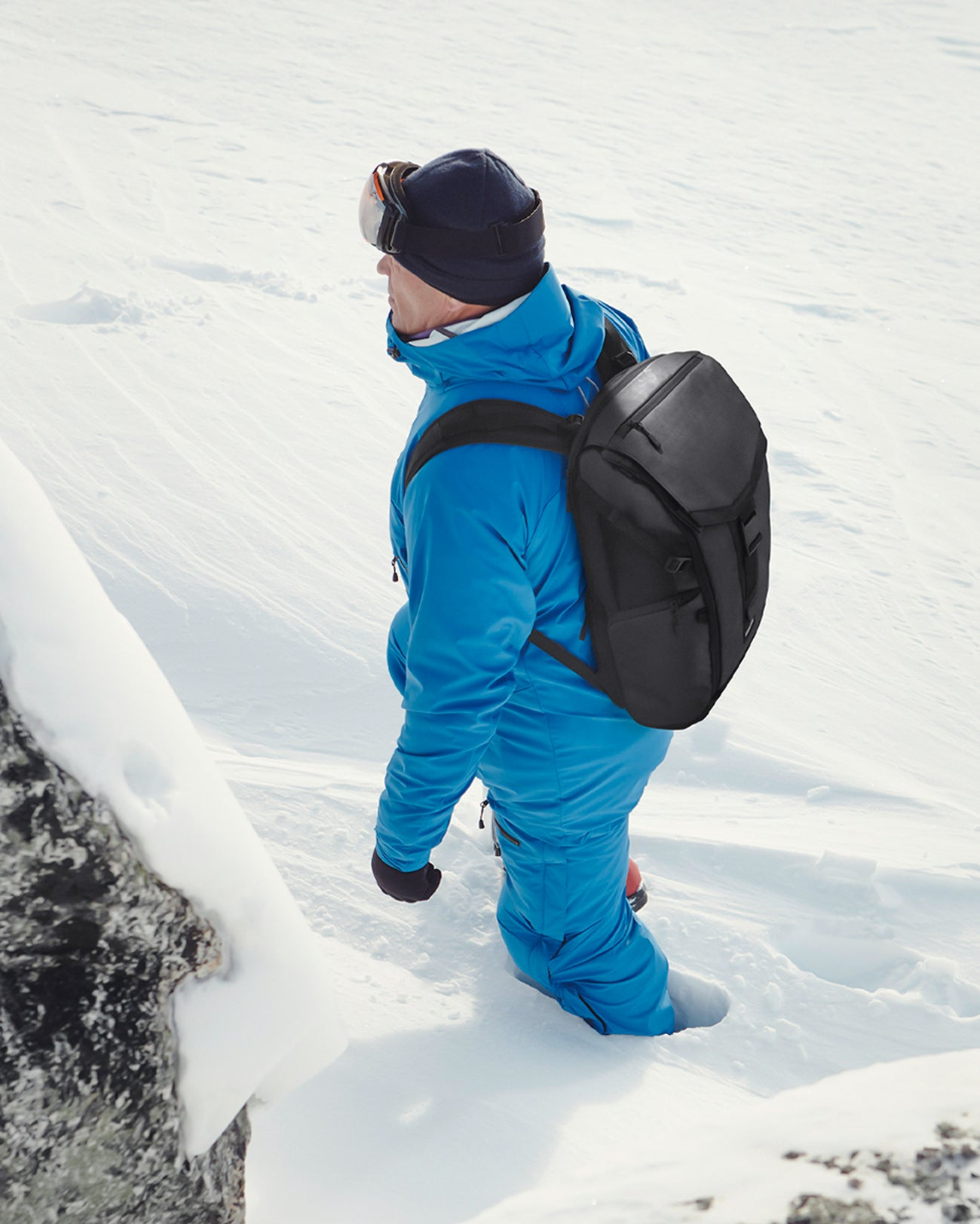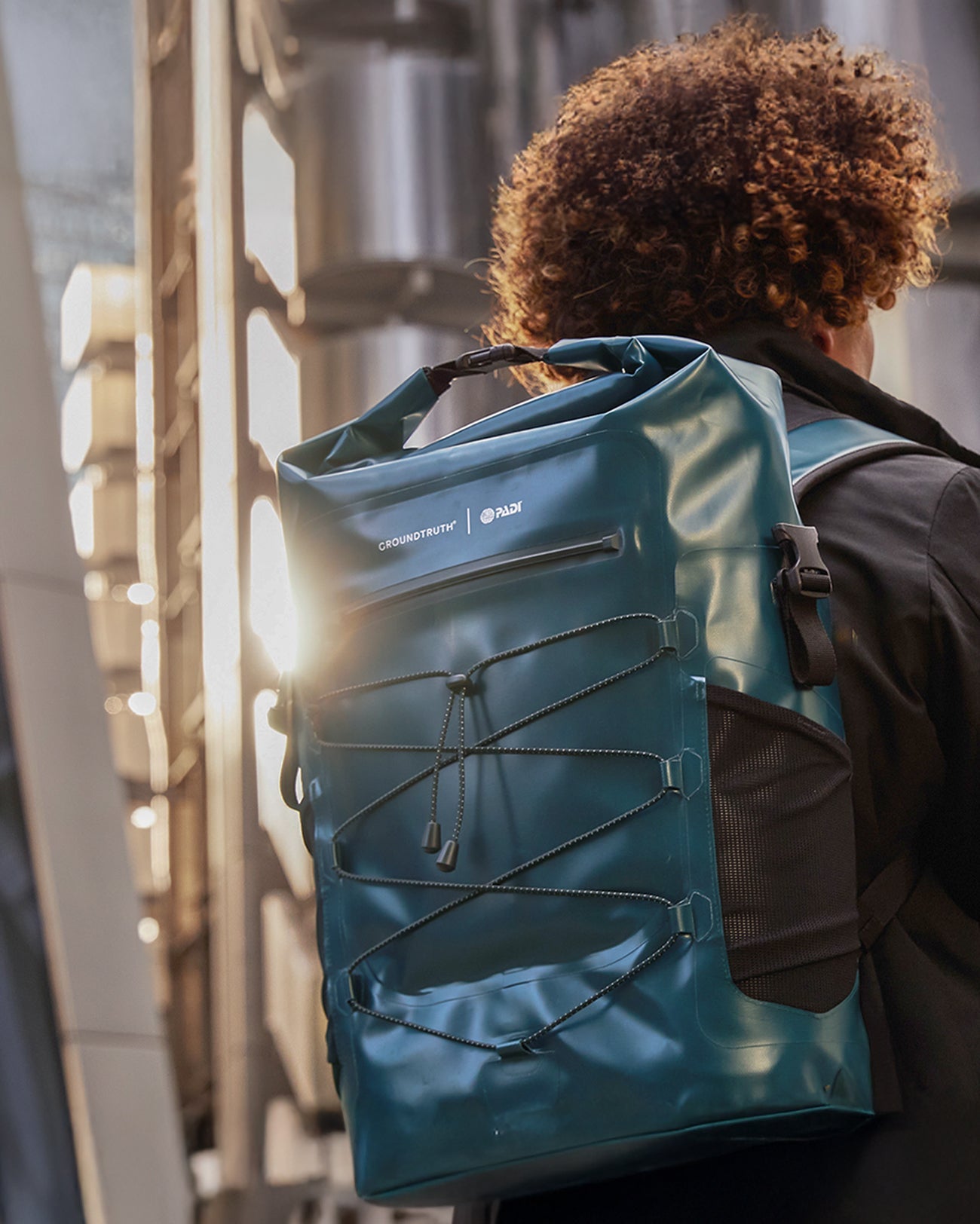TREKKING TO THE LOST CITY
Written by Sasha Fairhead
As I walked up the final steps, my breath getting heavier, I caught a glimpse of cascading stone terraces. Deep within the thick Colombian jungle are the remnants of a bustling city that towered over vibrant landscapes as far as the eye can see. ‘La Cuidad Perdida’ or ‘The Lost City,’ is an archaeological site from the Tayrona people consisting of 216 terraces, carved into the mountainside. With artefacts found from around 800 AD, it is a site that boasts advanced infrastructure pre-dating the Incan Machu Picchu and with much of the history still unclear.

While traveling and working remotely for the past two years, I occasionally find myself wildly unprepared for the adventures I embark on, yet I always seem to make it work. Then, I set out on a four day trek in the middle of the rainy season deep in the lush forests of the Sierra Nevada de Santa Marta.
Thankfully, I had my RIKR 23L Ultimate Backpack that is usually used as my camera bag. I managed to fit everything I needed for the hike, plus a camera. I was able to safely store my drone in a friend’s bag - which never came back down the mountain after it lost signal and was rehomed in a tree! While I had left the 23L’s detachable hip belt in the UK, I made a makeshift waist strap out of carabiners and a traditional Colombian chumbe, a woven belt, that was gifted to me. I would have managed with just the sternum strap but wanted to be sure.
Our group loaded into cars and drove two and a half hours off road to reach the start of our journey. After a delicious lunch, we headed on a three hour uphill walk. The heat, rain and mosquitoes, the guide ensured us, are all included in the trip.
While the Sierra Nevada de Santa Marta was once controlled by paramilitary groups, the ownership and control of the area has since been given back to the local indigenous communities. Some say the indigenous communities knew about La Cuidad Perdida, some say it was unknown to them and others say they saw it as a cursed site.
In 1972, Frankie Rey, a farmer and treasure looter came across the steps leading up to the city and explored further. Shortly after, gold figurines and artifacts were found circulating the black market. This drew in more looters and led to a brutal conflict over their findings. Frankie Rey then led the government to the site and in 1976, it became an archaeological site and restorations were done over 6 years until it became open to the public, with Frankie Rey leading the first tour.

Walking through, the city is seemingly vast, however, what is seen only makes up a fraction of this ancient Tayrona site. It is claimed that local indigenous communities refuse any further exploration of La Cuidad Perdida in order to avoid the area becoming overly touristy and diluting indigenous culture.
As you’re hiking, you witness valleys of vast forest on either side, stopping at little water stands every hour. As we crossed past where vehicles are unable to access, pot holes big enough for me to lie in start to appear in the road - signs of water erosion in the clay roads. At times, the base of my wooden stick walking pole drenched in wet clay.
As drops of rain start to cool ourselves, we turn into our camp, with lines of bunk beds and tables underneath a tin roof. A makeshift village for incoming hikers.
We drop our bags and head straight to “La Piscina”, ‘the swimming pool’ which is arguably one of the most beautiful swimming spots I have ever been to. At the base of a small waterfall is a natural pool with vibrantly green vegetation cascading over each side.
At dinner, we sit around the table having long discussions with people from all over the world. One of my favourite parts about traveling is getting to hear the stories of people from different backgrounds, how each of our separate lives have led us to where we are right now, sharing a conversation about life, swatting away mosquitoes with the sound of pouring rain in the background.

The next day, we woke up at 5am and after breakfast, headed out on the trail. The clouds weaved through the valleys of jungle, setting a moody scene as our tour guide and translator led the way uphill. They nicknamed me ‘Shakira’ and coming from Colombians, I will take that as a massive compliment.
After a night of heavy rains, the rivers were strong and the clay had turned into a thick mud. The second day was a long and difficult hike but every time I looked up from the group, I was captivated by Colombia’s beauty. I have been continuously humbled by this country’s spectacular landscapes, friendly people and in contrast to what many may believe, felt a lot safer than some parts of London.

Dodging the mud, I fist-bumped Kogui kids, one of the local indigenous communities, who were playing outside their hut and passed locals on their mules, packed with goods on either side. Deep in the jungle where there are no roads, mules are how local communities transport goods.
The Sierra Nevada de Santa Marta is home to four indigenous communities, yet only Kogui and Wiwa live along the trail. One will see a Wiwa male always walking around with a mochila, a traditional woven bag, full of coca leaf to chew and with a Poporo in hand, a sacred object a man receives when he turns 18. It starts off as a small hollowed out pumpkin, then they dip a small stick in the center filled with crushed sea shells, lick it and then add to the Poporo to grow it. Each movement, a way to express their insights as a form of meditation that is practiced throughout daily life.
Part of me wonders if the indigenous communities in the region feel exploited with all the tourists passing them on a daily basis to reach The Lost City. However, whilst they are very in touch with their traditions, they are still connected to the rest of the world. Along the trail, tourism has allowed economic opportunity for the community.
After lunch, it starts to pour and head back on the trail in the rain, a refreshing feeling to hide the sweat. While most people covered their bags with waterproof covers, I didn’t need to as the 23L Ultimate Backpack’s stormproof coating kept everything dry despite a downpour. We then were told it was about to be ‘Happy Hour,’ an hours uphill climb but just without the margaritas.

On the third day, we set out early and snaked alongside the fast flowing Buritaca river. We then make our way up 1200 steps to get La Cuidad Perdida. The Tayrona were said to be short people and at times the small steps layered on top of each other.
When we make it out up to the top, remnants of an ancient civilisation come into view. It is a fairly new site, only open to the public in 1982. With that, are gaps within the history of La Cuidad Perdida and its inhabitants. We only know about their presence there due to the site, the artifacts found there, and through oral history of the indigenous tribes that are descendants of the Tayrona. Much of what we know about them today beyond carbon dating, is based on speculation. The city supposedly took 400 years to make and was abandoned in 1600, suspectedly due to disease and religion brought in by the Spanish.
It is now home to the Mamos, indigenous spiritual leaders of the local peoples. We had the rare opportunity to meet one of them, a wise look amongst his pronounced cheek bones and bulging lip from chewing coca leaf.

After exploring this archaeological site, I made the descent back down, catching brief eye contact with an indigenous Kogui man, weaving up-hill through the ruins without breaking a sweat. We finally arrived at our camp, dropped our bags and headed to the river for a celebratory drink while wading in the shallows.
After dinner, we were lucky enough to have a long chat with the son of Frankie Rey, Edwin Rey, now a tour guide himself. He told us all about the history, complexities and the time he guided a group who got kidnapped by Colombian paramilitaries. Himself and the cook managed to escape, walking three days through alternative routes to get to the nearest city.
The final day was by far the toughest, a long trek back with seemingly never ending uphills. Nonetheless, with an incredible feeling after witnessing a piece of history. Traversing down, I slid in a muddy patch, drenching the front of my bag in mud and really testing its limits.
We finally reached the end in time for lunch and a well deserved cold beer. While I may have lost my drone and returned with more mosquito bites than I can count (I gave up after 122 on one leg), that pales in comparison to getting to trek through the Colombian jungle alongside indigenous communities and exploring La Cuidad Perdida.

